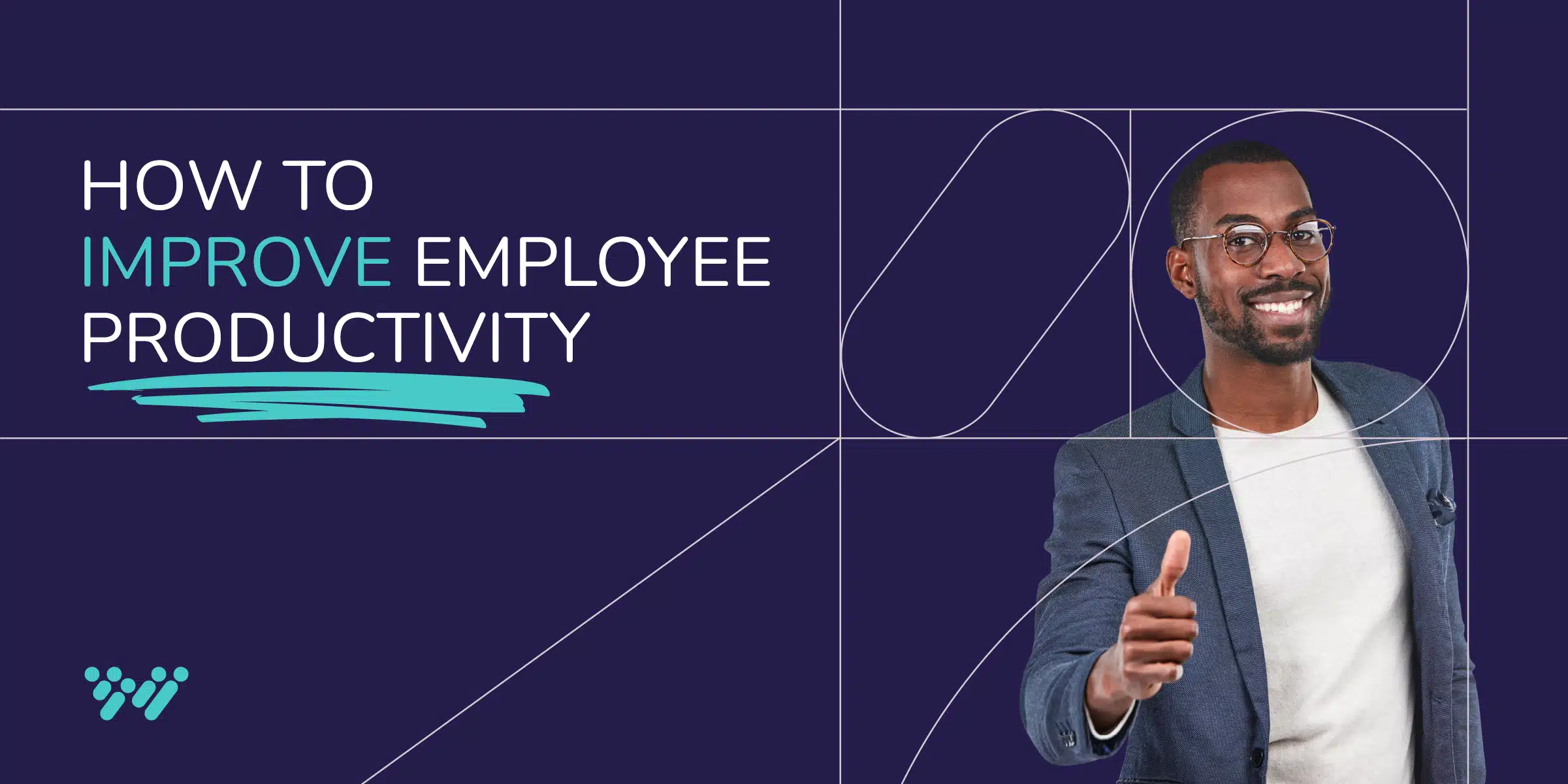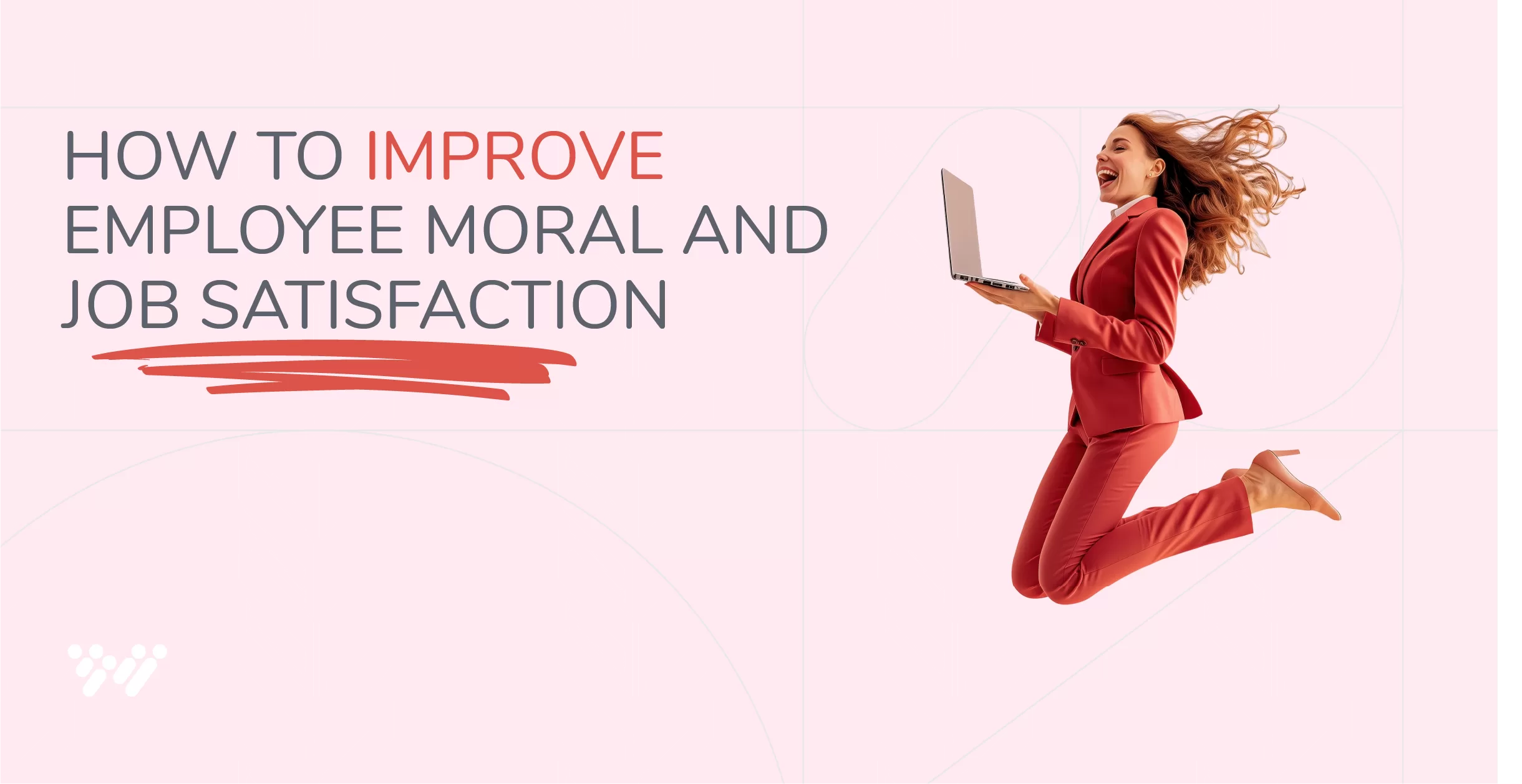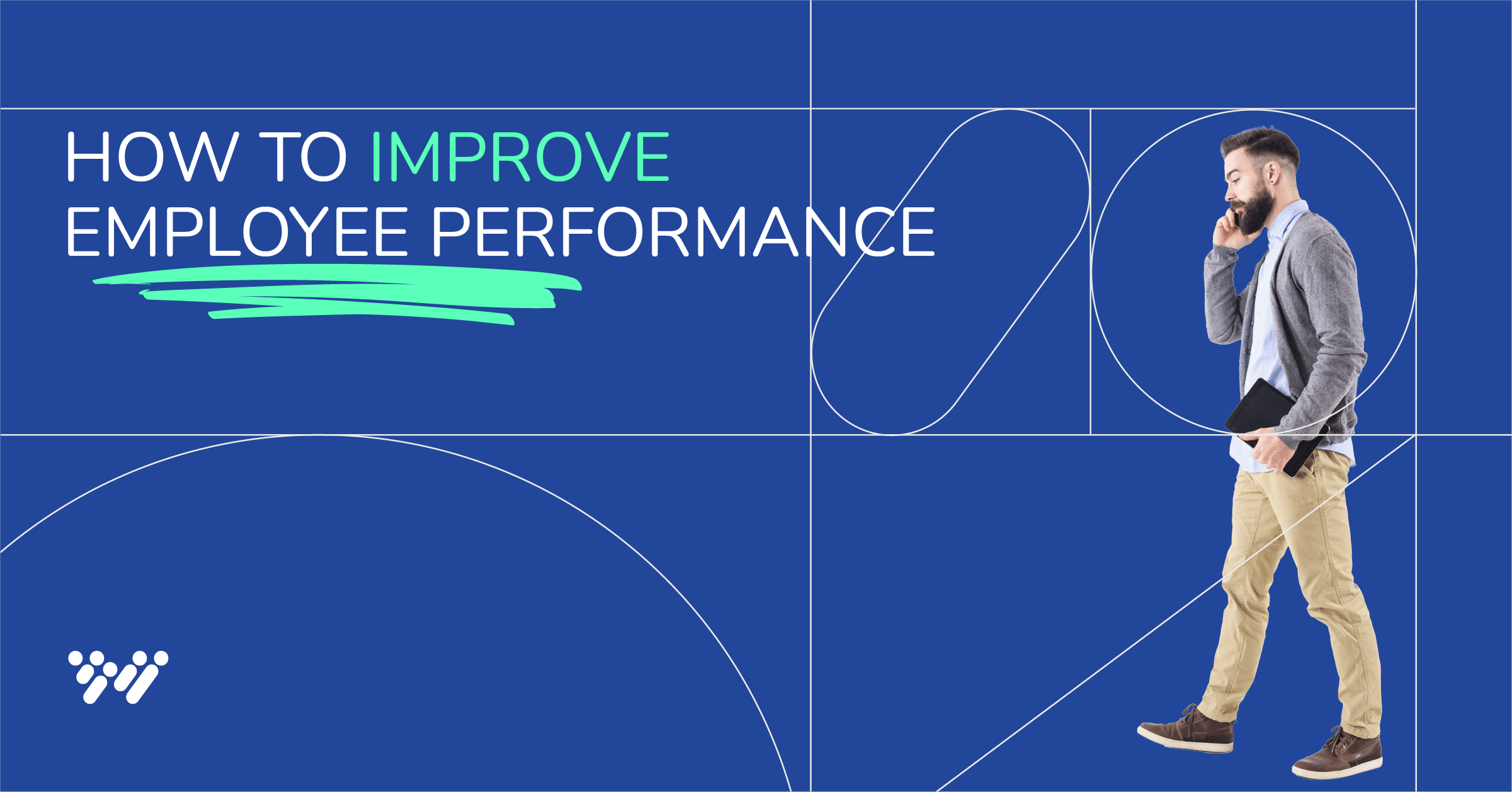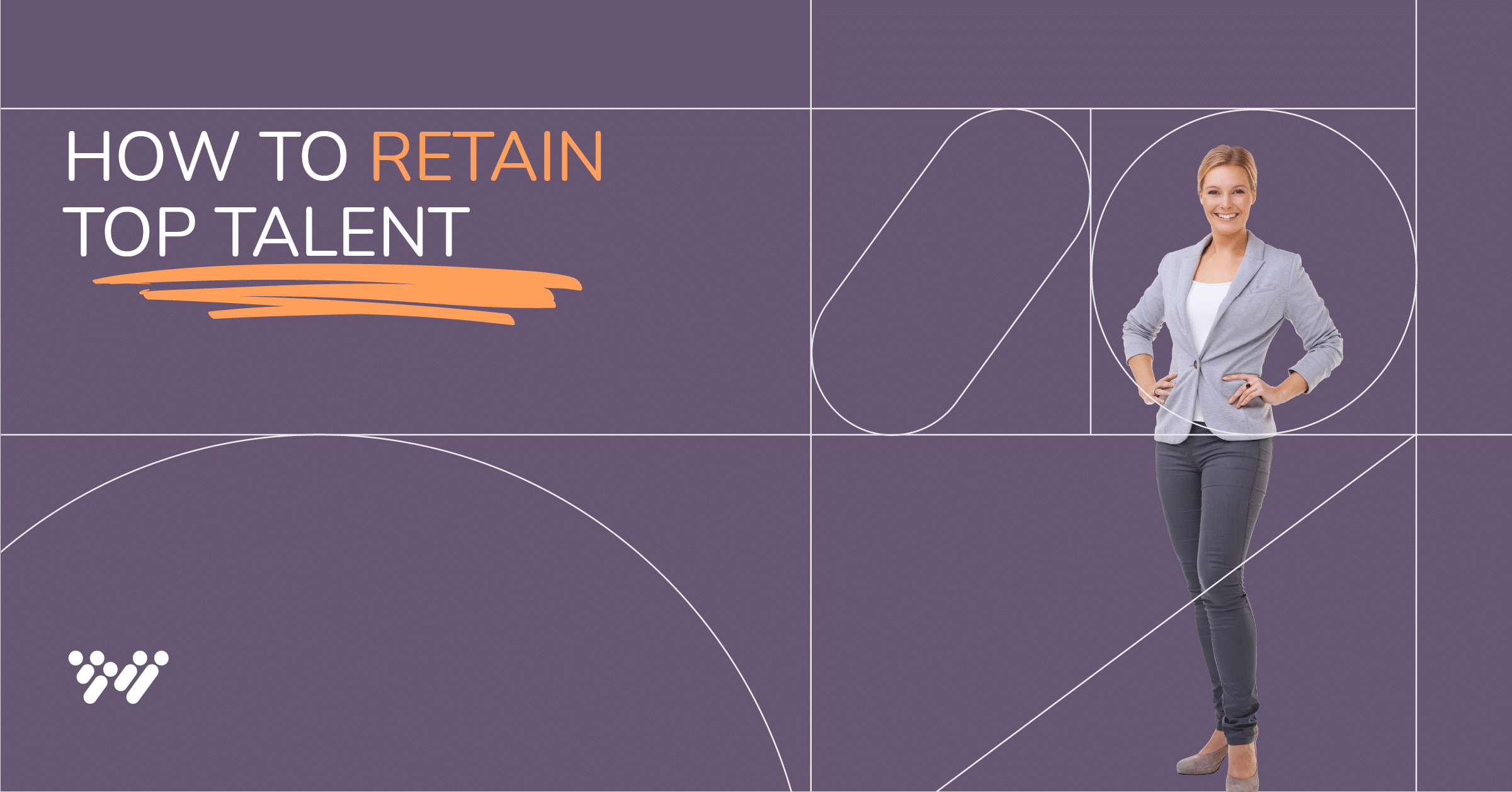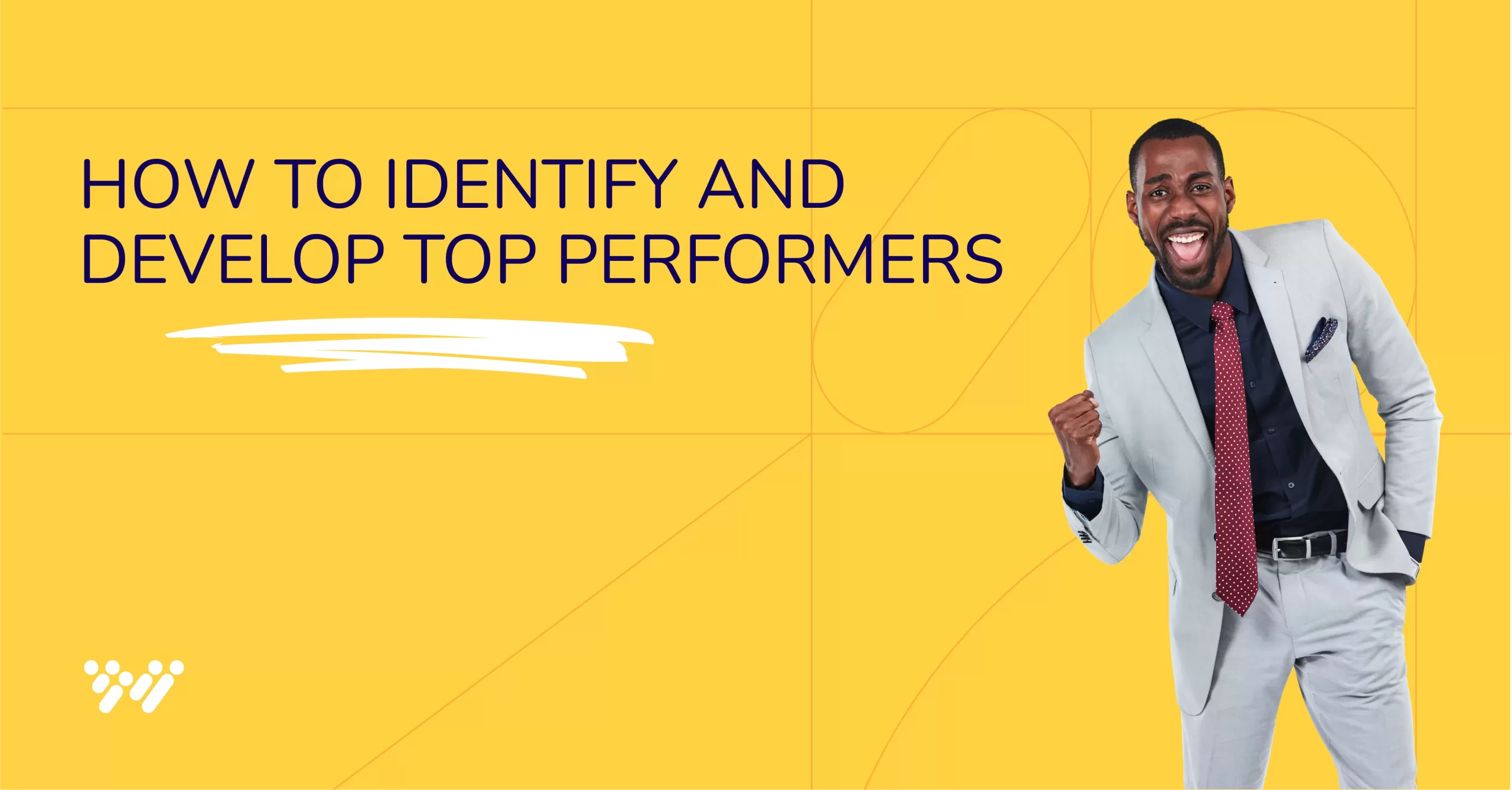With employees asked to do more with often fewer resources, the impact on productivity can be huge. Heavy workloads, urgent deadlines, and poor workplace safety can lead to a noticeable dip in employee productivity, affecting the bottom line and turnover while damaging workplace culture. For businesses looking for methods on how to improve employee productivity, it’s important to note that employee stress is at an all-time high and 62% of the workday is wasted on repetitive tasks. Finding ways to boost productivity while keeping a positive work culture doesn’t have to be overwhelming.
In this guide, we’ll uncover why productivity is more than just a buzzword — why it’s essential for the success and longevity of your organization. You’ll discover practical strategies to boost productivity and increase revenue without compromising the health and happiness of your people.
We’ll cover:
What is employee productivity?
Employee productivity measures how much work an individual or team can complete in a set amount of time. By understanding how people are working and managing their workloads and resources, organizations can identify areas for improvement, like increasing efficiency and optimizing resource allocation. More importantly, if you’re able to clearly establish a baseline for employee productivity, you can measure and track it over time to see how it’s improving, stagnating, or degrading.
Put simply, the whole purpose of measuring employee productivity is to figure out what’s working well and what could be enhanced to help employees get more done with less time and fewer resources.
Here’s a simple formula to calculate employee productivity:
Productivity = output (what is produced) / input (hours worked and resources used)
So, for example, let’s say a healthcare assistant sees 80 patients in an 8-hour shift. The calculation for their productivity would be:
Productivity = 80 patients / 8 hours = 10 patients per hour
Managers can understand productivity rates when planning shift rotas and allocating resources more efficiently. This ensures the right number of employees are scheduled to meet demand without overworking staff.
Why is employee productivity important?
Productive employees keep businesses profitable. In fact, organizations with the most-engaged workforce are 23% more profitable than those with the least-engaged employees. By maximizing output from your team, tools, and processes, you can take on more work or invest in new resources, making it easier to adapt, scale up, and stay ahead of competitors.
It’s also important to strike the right balance — pushing employees too hard can increase burnout and turnover. With nearly 38% of employees quitting within their first year, finding the productivity sweet spot is key to long-lasting success.
Factors that impact employee productivity
The quest for greater productivity is reshaping how work is done, where it’s done, and the skills required to succeed. The workplace isn’t the same as it was 20 years ago — or even two years ago. Everything from technology to culture is driving that shift. Here are some of the factors affecting employee productivity:
Advancements in technology
Technology cuts both ways when it comes to productivity. Having the latest technology can improve productivity by leaps and bounds, whereas not having adequate technology (including hardware and software) can lead to serious productivity problems. This could be a lack of physical technology, like access to standing desks or a traditional office setup, or a lack of digital technology, such as still working with legacy software solutions that don’t offer automation.
However, advancements in technology can skyrocket productivity. In one study, the National Bureau of Economic Research found that generative AI solutions (like ChatGPT) can improve workplace productivity by an average of 14%. For specific teams like HR, organizations can cut resume reviewing time by up to 75% with pre-hire assessments. By giving employees the proper tools, organizations can dramatically increase productivity.
Shifts in work culture
There’s no doubt the way we work has changed. Remote and hybrid work, flexible hours, and digital team collaboration tools are the new norm, not the exception. Organizations are now focusing more on work-life balance, mental health, and inclusive environments.
And quite rightly so.
Research upon research shows helping employees improve their mental health can positively affect the workplace. Better mental health reduces stress and burnout, improving job performance and fewer sick days.
Changes in employee expectations
Some 45 million employees in the U.S. chose to quit their jobs in 2023. Emphasis on the word “chose.” These employees weren’t laid off or fired. This reveals a big shift in how employees feel about their jobs. Companies must focus on keeping their workers happy to avoid losing them and keep them producing.
According to Aon’s UK Benefits and Trends Survey 2022, most UK employers think employees’ expectations around their work experiences are changing. For example, 60% of employees want to focus more on environmental and sustainability policies or benefits, up from 51% in 2021. When companies meet and exceed these expectations, employees feel more connected to the company’s values.
With 70% of employees finding meaning in their work, finding fulfillment encourages a more goal-oriented approach. When employees see how their work contributes to the company’s bigger goals, they’re galvanized to focus on tasks that make a real difference.
Skills and training
Pay and benefits will always be important for employees, but in just one year, helping employees grow in their careers moved from the ninth highest priority for L&D teams to fourth, according to LinkedIn’s 2024 Workplace Learning Report, highlighting how important career growth is for employee happiness.
It’s why organizations today with strong learning cultures see better retention, more opportunities for career progression, and a stronger pool of future leaders compared to those who don’t prioritize employee development. This training is for more than just the employees, however. More skilled workers are more productive for the organization.
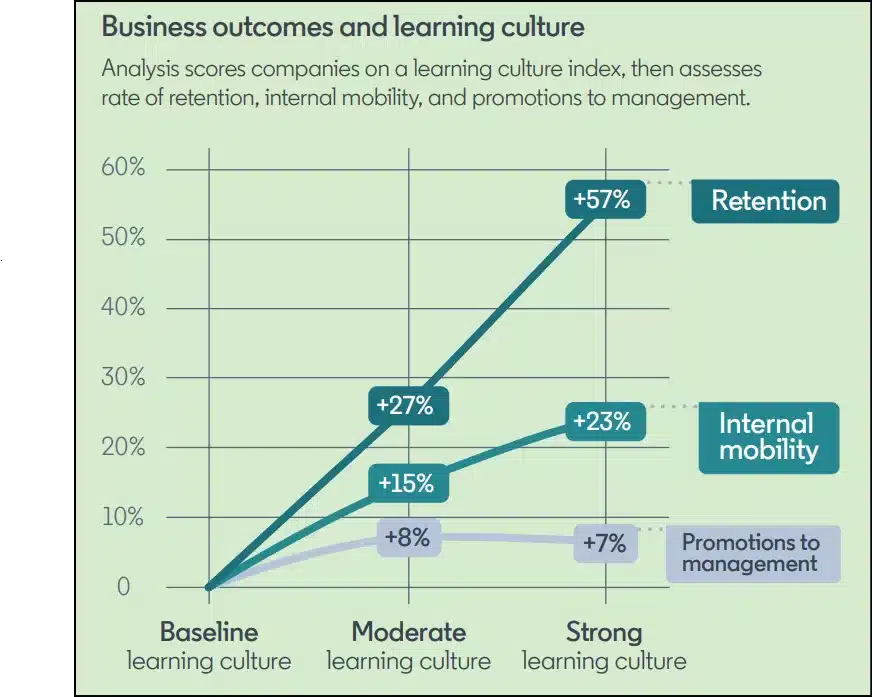
Remember, training starts at onboarding. Employees are learning how to best work at your company. A study by The Wynhurst Group found that those who go through a structured onboarding program are 58% more likely to stay with the company for three years or more.
A well-structured and engaging onboarding process sets the tone for a new hire’s entire journey. It’s their first opportunity to experience your company culture and feel welcomed in their new position.
Show how you value a candidate’s unique strengths and don’t take a one-size-fits-all approach to onboarding. Customized tips for successful onboarding are a great way to keep your employees productive and engaged. These tips improve the candidate experience and are based on the information candidates provide. Even better, Wonderlic provides detailed information on candidates’ preferred learning and communication styles, helping you personalize the onboarding experience wherever applicable.
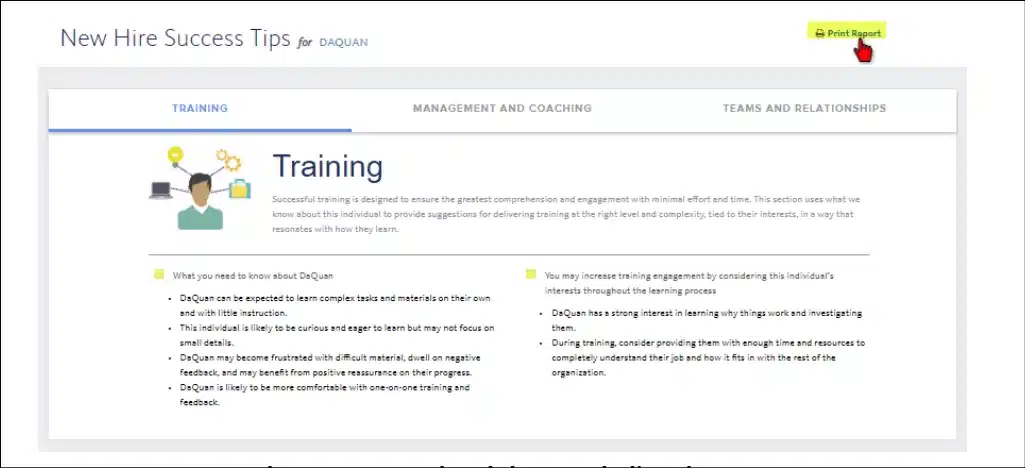
Effective leadership
Leaders’ roles are changing fast. Challenges like digital transformation and hybrid work require strong leadership to guide teams efficiently. A recent survey shows that companies want leaders who can not only handle these challenges but excel at them. Leaders who provide clear direction, feedback, and support can inspire individuals to perform at their best, enhancing overall productivity.
Successful organizations help leaders succeed, not just manage. With technology becoming pivotal in every business, leaders need strong digital and data skills. More companies are investing in leadership development to ensure their leaders are ready for anything.
How employee productivity is changing
Where we work
Before the COVID-19 pandemic, most office-based workers worked exclusively from an office. Now, hybrid work is the norm. This continued trend shift highlights that today’s workers want more flexibility and different ways of working, further transforming traditional work models, including team collaboration and working hours.
What we work on
On top of these challenges, ManpowerGroup’s 2024 Talent Shortage survey report shows a growing skills gap, with shortages across some sectors hitting an 18-year high of 80%. As skill gaps widen, businesses are putting more focus on designing and growing their workforce development programs to address growing skills gaps.
How we work
As businesses look to improve work-life harmony, efficient work processes and new technology, such as artificial intelligence (AI), have reduced the need to work long hours and improved job satisfaction. By accelerating manual, time-consuming tasks like resume screening and interview scheduling, technology allows employees to concentrate on more complex, meaningful, or strategic work.
How to improve HR’s productivity in the workplace
Let’s look at some practical strategies to enhance the HR team’s productivity.
Reduce candidate screening time
Over the course of a year, the average knowledge worker spends 209 wasted hours on duplicate tasks. Unnecessary work tasks, such as entering the same information into multiple systems, can cannibalize valuable time, time that could be spent strengthening relationships with candidates, coordinating with hiring managers, or sourcing quality talent.
Wonderlic’s pre-hire assessment, Wonderlic Select, can make a real difference, slashing resume review time by 50%. Select is a multi-measure assessment that measures cognitive ability, personality, and motivation to reveal best-fit candidates and reduce human bias by using the latest industrial-organizational (I/O) psychology and science. This freed up time not only boosts recruiters’ efficiency but also personal job satisfaction.
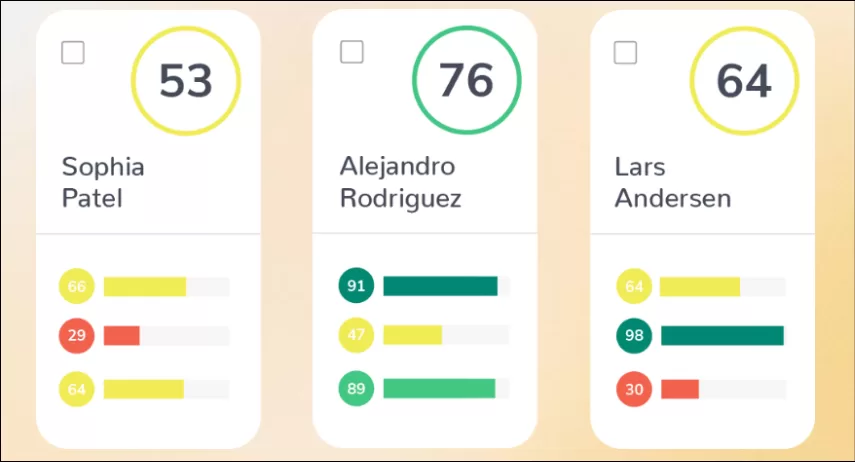
Hire the right person from the start
Let’s imagine Sara, a digital marketing expert, to illustrate how hiring can affect employee productivity.
Sara has the right qualifications on paper but lacks essential interpersonal skills. Soon after starting, her manager notices she is strugglng to communicate well with stakeholders and is in constant conflict with core team members. In addition, although she has the proficiency needed to create and distribute targeted ad campaigns, she isn’t able to pick up new skills around marketing analytics and AI. This creates tension in the team and affects long-term productivity and performance.
Now, imagine Sara was selected using a multi-measure assessment that evaluated her cognitive abilities, personality, and motivation beforehand — including things like learnability and agreeableness. This comprehensive view would have ensured she had the necessary skills and long-term fit for the team and role.
Integrate with the existing tech stack
Knowledge workers, such as HR and project managers, spend a staggering 88% of their workweek communicating across multiple channels.
This constant stream of to-ing and fro-ing between multiple platforms disrupts workflow and lowers productivity. Plus, frequently switching between tools for tasks like tracking applicants and managing calendars can break concentration, making it harder to focus and increasing mistakes.
By integrating platforms for handling hiring and employee development, your organization can benefit from:
- Seamless data flow: Connecting Wonderlic’s assessments with your applicant tracking system (ATS) ensures that candidate data moves smoothly from one platform to another without any problems. This integration reduces manual data entry and errors, giving you time to focus on higher-level tasks rather than worrying about having inaccurate data.
- Improved decision-making: Integrate with existing tech tools, such as a learning management system (LMS), to enhance employee growth and productivity and get valuable insights into how engaged employees are in training and development programs.
- Better workforce planning: Get a complete view of recruitment and employee performance metrics, like identifying high achievers and those needing additional support. This helps with strategic workforce planning and development.
Empower employees to identify and pursue development opportunities
When managers empower employees to seek personal development opportunities, they are more likely to develop skills matching their goals and organizational needs.
And when employees are encouraged to learn new skills and technologies, they’re better at handling new challenges and changes at work. This flexibility means they can adapt quickly, cut down on delays, and get things done more efficiently.
Wonderlic Develop, our self-led employee development and performance management tool, can enhance employee self-awareness. By identifying individual strengths and weaknesses and offering guidance on how to use or improve these for better job performance, Develop can reveal:
- The key attributes needed for success in the role and how the employee can improve upon both their strengths and weaknesses
- The attributes the employee can easily leverage for success
- The important but lacking qualities for the role that may need additional development
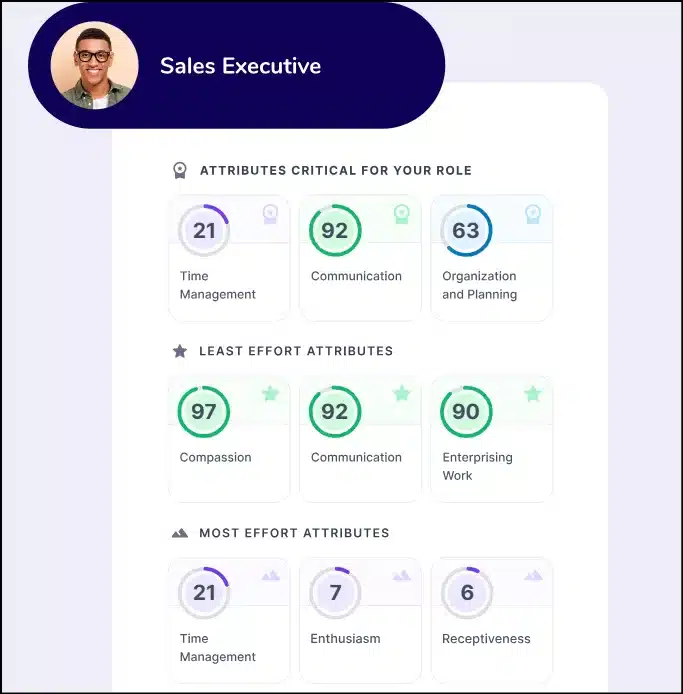
Can your employees’ productivity be improved?
Yes.
Productivity isn’t just about getting more done — it’s about working smarter, optimizing what you already do, and creating a workplace where employees enjoy their work and succeed. Start by:
- Listening to your people. Invite employees to share their views about new policies or procedures. Better still, involve them in working groups to shape and refine strategies. Gather feedback about company culture, job satisfaction, and any roadblocks in their daily tasks. This can reveal potential productivity issues.
- Leveraging data and analytics. Performance metrics track the amount and quality of work completed by employees, such as the number of completed projects or resolved customer complaints. This means you can measure performance against your organization’s key performance indicators (KPIs).
- Making the most of your colleagues. Some 82% of workers say happiness and engagement are essential for productivity. Since employees and their managers work closely together, frequent absences can indicate underlying issues that need addressing, such as workload or personal matters. Consider working with L&D colleagues and tapping into the knowledge of departmental managers to monitor engagement and well-being.
- Using proven learning methods. Many businesses employ the 70-20-10 learning model, a scientific approach to learning where 70% of learning comes from experiential, on-the-job training, 20% from peer interactions, and 10% from formal training, like seminars or courses. This model defies a one-size-fits-all professional development definition and, instead, embraces the reality that professional development is a continuous journey of growth, adaptation, and learning, empowering employees to excel in their current and future roles.
How Wonderlic improves employee productivity
Hiring managers can make fairer candidate comparisons by gaining an unbiased perspective on each candidate’s skills, abilities, and potential.
Wonderlic Select
Wonderlic Select provides a side-by-side comparison of candidates, offering objective data to evaluate the strengths and trade-offs among top contenders. This means you can instantly narrow down the talent pool to the top 10%, better predicting the candidates who will succeed in their new roles and those who aren’t a good fit. But don’t take our word for it.
Linda, Director of Human Resources at Mays Chemical, says, “Wonderlic Select has offered our company a far more streamlined tool for assessing candidates than prior providers we have worked with. The data provided is insightful in learning the candidate’s cognitive ability, motivation, and personality. It is concise and easy for our less-experienced hiring managers to understand and navigate.”
After your new hire starts, boost productivity through a structured and personalized onboarding experience and by regularly providing development plans. The best development plans give actionable strategies and real-time feedback to help employees leverage their strengths and improve upon their weaknesses in line with their roles, interests, and career goals.
Wonderlic Develop
Wonderlic Develop is a self-led employee development solution that gives every employee a personalized learning experience by identifying their highest-effort and least-effort attributes relative to their role. Employees receive actionable coaching tips and strategies they can quickly implement into their day-to-day work for immediate growth and long-term improvements.
And because Develop is employee-led, managers don’t need to spend hours creating and tracking development plans for each teammate. Instead, employees can grow at their own pace, gaining valuable ownership over their careers, ultimately increasing performance, morale, and job satisfaction.
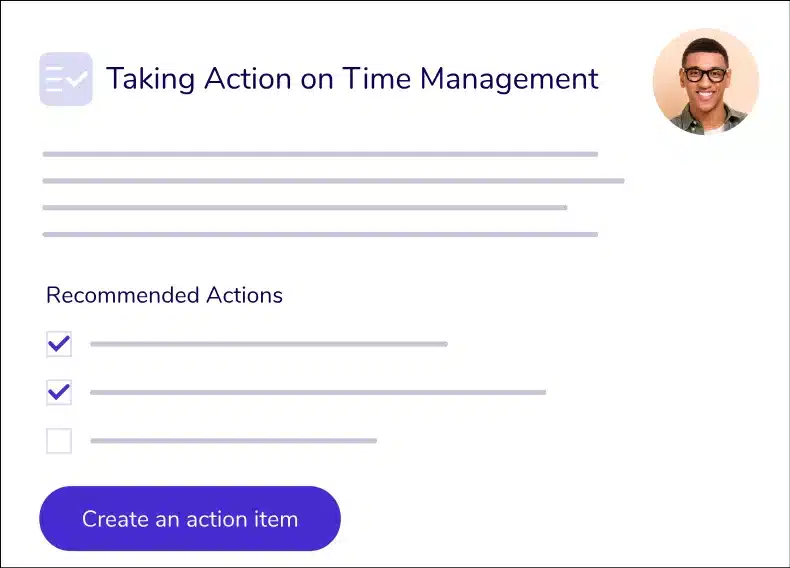
In simple terms, setting clear performance standards is like the concrete blocks that support the foundation of a new house. They’re the sturdy base upon which you can build a productive team. Setting these benchmarks makes it easier to track progress and offer support when needed.
Ready to ramp up company productivity, hire top performers, and unlock employees’ potential?
Get started with a demo of Wonderlic.
FAQs
You can improve employee productivity by hiring motivated employees who are a good fit for their roles and equipping them with the right technology, skills, teams, and company culture. You can start by setting clear goals so everyone understands their role and its impact on company objectives.
Seek to create an inclusive environment where everyone feels valued through regular feedback and listening strategies. Empower staff to own their development with skill-building opportunities. Lastly, maintain a supportive atmosphere to boost workplace motivation and workplace efficiency.
– Give your people the right tools to do their job well.Having the right tools makes their work easier and more efficient — increasing productivity and job satisfaction.
– Maintain open communication by creating channels where everyone, regardless of role, can easily share their ideas and concerns.
– Celebrate successes and acknowledge hard work. Recognition motivates employees to maintain high performance and builds a positive work environment.
Provide personalized benefits and rewards to ensure your employees’ physical, emotional, and financial health are taken care of. Offer opportunities for growth and skill development to keep them engaged and invested in their roles. Finally, offer flexible arrangements to help avoid burnout and keep your team motivated and happy.
Invest in the right technology to help employees perform their jobs more efficiently.
Streamline processes by simplifying workflows, reducing bottlenecks, and cut down on unnecessary steps to make tasks more efficient.
Create opportunities for teamwork and problem-solving.



